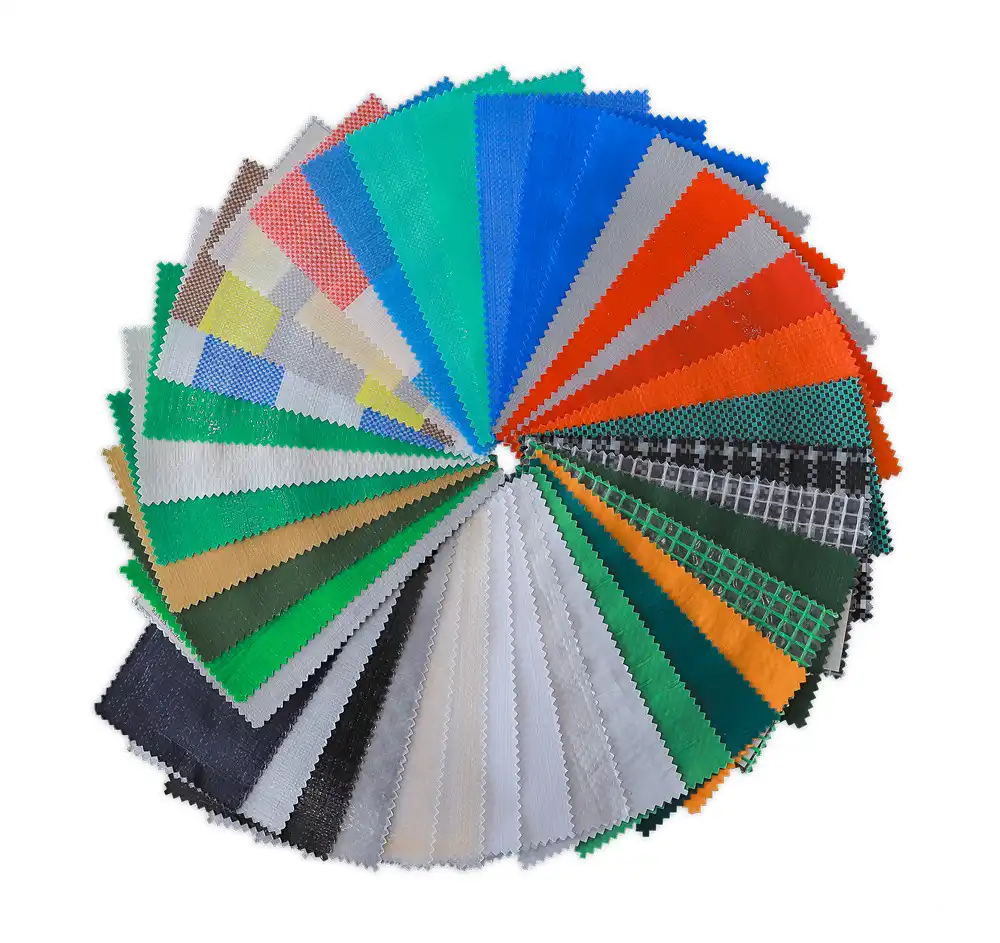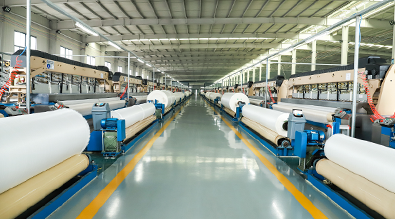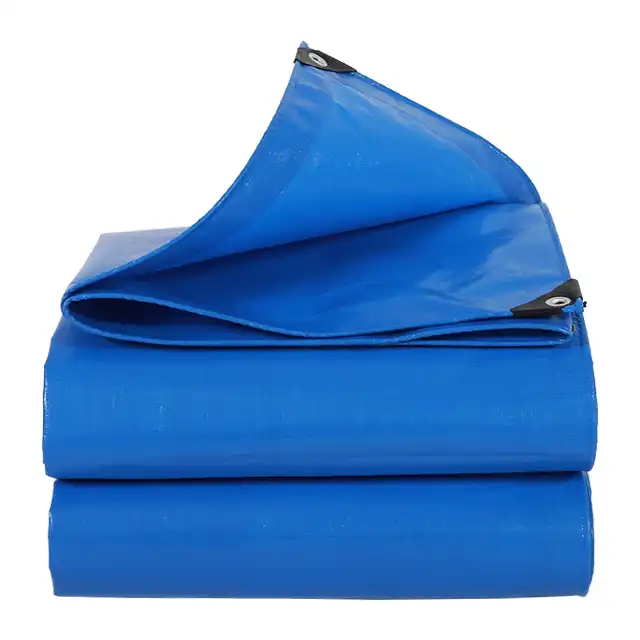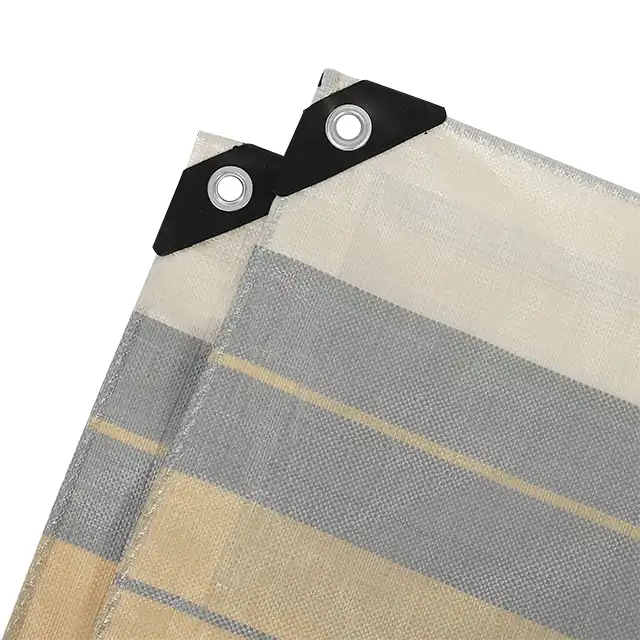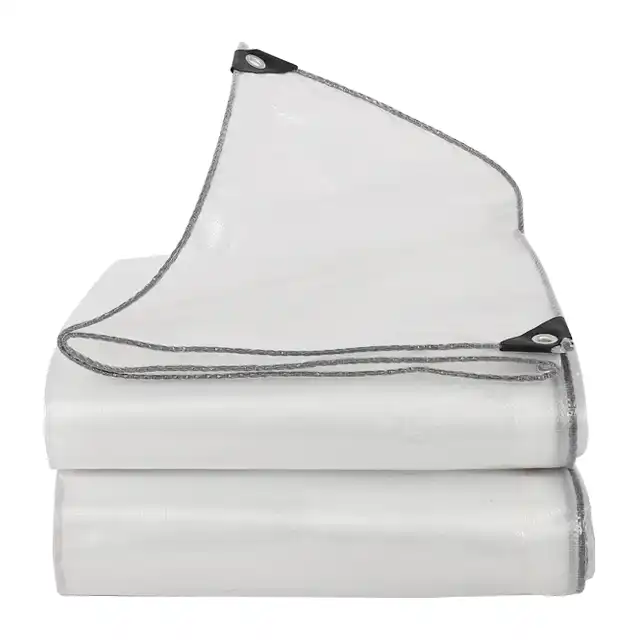When and How to Use Roof Tarps for Leak Protection?
Roof leaks can cause significant damage to your property, leading to costly repairs and potential health hazards from mold and mildew. Understanding when and how to use roof tarps for leak protection is essential for both emergency situations and long-term maintenance strategies. Roof tarps serve as temporary waterproof barriers that can prevent water damage while permanent repairs are arranged. These versatile protective covers are particularly valuable during severe weather conditions, after storm damage, or when immediate professional roofing services are unavailable. High-quality roof tarps made from durable polyethylene materials offer excellent waterproofing capabilities and UV resistance, making them ideal for both short-term emergency coverage and extended protection periods.
Critical Timing for Emergency Roof Tarp Installation
Immediate Response to Storm Damage
 When severe weather strikes and damages your roof, the timing of roof tarps installation becomes absolutely critical for preventing further structural damage. Professional contractors and homeowners alike recognize that the first 24-48 hours following storm damage represent the most crucial window for implementing emergency protective measures. During this period, exposed areas of the roof are vulnerable to additional water infiltration, which can exponentially increase repair costs and create dangerous living conditions. High-quality roof tarps manufactured with advanced polyethylene materials provide immediate waterproof protection that can withstand continued harsh weather conditions while permanent repairs are planned and executed. The urgency of roof tarps deployment cannot be overstated when dealing with compromised roofing systems. Water damage spreads rapidly through building materials, affecting insulation, drywall, flooring, and electrical systems within hours of initial exposure. Professional-grade roof tarps featuring reinforced edges and heavy-duty construction can effectively seal damaged areas, preventing cascading damage throughout the structure. These protective covers must be installed with proper securing methods to ensure they maintain their integrity against wind uplift and weather exposure, making the selection of appropriate materials and installation techniques paramount to successful emergency protection.
When severe weather strikes and damages your roof, the timing of roof tarps installation becomes absolutely critical for preventing further structural damage. Professional contractors and homeowners alike recognize that the first 24-48 hours following storm damage represent the most crucial window for implementing emergency protective measures. During this period, exposed areas of the roof are vulnerable to additional water infiltration, which can exponentially increase repair costs and create dangerous living conditions. High-quality roof tarps manufactured with advanced polyethylene materials provide immediate waterproof protection that can withstand continued harsh weather conditions while permanent repairs are planned and executed. The urgency of roof tarps deployment cannot be overstated when dealing with compromised roofing systems. Water damage spreads rapidly through building materials, affecting insulation, drywall, flooring, and electrical systems within hours of initial exposure. Professional-grade roof tarps featuring reinforced edges and heavy-duty construction can effectively seal damaged areas, preventing cascading damage throughout the structure. These protective covers must be installed with proper securing methods to ensure they maintain their integrity against wind uplift and weather exposure, making the selection of appropriate materials and installation techniques paramount to successful emergency protection.
Seasonal Weather Preparation Strategies
Proactive roof tarps installation before anticipated severe weather events represents a strategic approach to property protection that can save thousands of dollars in potential damage costs. Many property owners in hurricane-prone regions, areas subject to heavy snowfall, or regions experiencing frequent hailstorms have adopted preventive roof tarps deployment as part of their seasonal maintenance routines. This forward-thinking approach involves installing temporary protective coverings over vulnerable roof sections during high-risk weather periods, ensuring continuous protection without the pressure of emergency installation during dangerous conditions. The effectiveness of preventive roof tarps applications depends heavily on understanding regional weather patterns and selecting appropriate materials for expected conditions. Professional contractors recommend using UV-treated polyethylene roof tarps with mesh reinforcement for extended seasonal protection, as these materials maintain their structural integrity and waterproofing properties over months of continuous exposure. The investment in high-quality protective materials proves cost-effective when compared to potential repair expenses from unprotected weather damage, making seasonal roof tarps installation a prudent financial decision for property managers and homeowners in high-risk areas.
Long-term Temporary Protection Solutions
In situations where permanent roofing repairs must be delayed due to material availability, contractor scheduling, or budget constraints, roof tarps provide essential long-term temporary protection that can extend for several months. This extended protection strategy requires careful selection of industrial-grade materials capable of withstanding prolonged weather exposure while maintaining waterproof integrity. Professional-grade roof tarps designed for extended use feature enhanced UV stabilization, superior tear resistance, and reinforced attachment points that ensure reliable performance throughout extended installation periods. The implementation of long-term roof tarps protection involves comprehensive planning to address seasonal weather variations, material degradation factors, and maintenance requirements. Property owners must consider factors such as thermal expansion and contraction, UV exposure effects, and potential wear from wind and precipitation when selecting materials for extended applications. High-quality polyethylene roof tarps with proper installation and periodic maintenance can provide reliable protection for six months or longer, making them invaluable for situations requiring extended temporary coverage while permanent solutions are developed.
Professional Installation Techniques and Methods
Proper Measuring and Material Selection
Accurate measurement and appropriate material selection form the foundation of successful roof tarps installation, determining both the effectiveness of protection and the longevity of the temporary solution. Professional contractors emphasize the importance of measuring damaged areas with sufficient overlap to ensure complete coverage and secure attachment points around the perimeter. The overlap requirement typically extends 2-3 feet beyond the damaged area on all sides, providing adequate material for proper securing and accounting for potential material shrinkage or movement during installation. This comprehensive approach to roof tarps sizing ensures that protective coverage remains effective even under challenging weather conditions. Material selection for roof tarps applications involves evaluating multiple factors including the expected duration of installation, local weather conditions, and the specific nature of roof damage being addressed. Professional-grade polyethylene materials offer superior performance characteristics compared to standard consumer tarps, featuring enhanced tear resistance, UV stabilization, and waterproof coatings that maintain their effectiveness over extended periods. The mesh construction and denier rating of roof tarps directly impact their durability and suitability for specific applications, with heavy-duty options featuring 1200-1800 denier ratings providing optimal performance for demanding installation conditions.
Securing and Anchoring Systems
The effectiveness of roof tarps protection depends critically on proper securing and anchoring systems that maintain material position and tension under various weather conditions. Professional installation techniques utilize multiple anchoring methods including mechanical fasteners, weighted systems, and tensioning devices that work together to create secure, weather-resistant installations. The selection of appropriate fastening methods must consider roof material composition, structural integrity, and the potential for creating additional penetrations that could compromise waterproofing integrity. Advanced securing systems for roof tarps incorporate redundant attachment points and load distribution techniques that prevent concentrated stress points that could lead to material failure or roof damage. Professional contractors often employ continuous batten systems along roof tarps edges, distributing securing forces across wider areas while creating more reliable weather seals. These sophisticated installation methods require specialized knowledge of structural loading, material properties, and weather resistance principles to ensure optimal performance and prevent installation-related damage to existing roof structures.
Weather Resistance and Durability Factors
Understanding weather resistance characteristics and durability factors enables property owners and contractors to select appropriate roof tarps materials and installation methods for specific environmental conditions. High-quality polyethylene roof tarps feature advanced polymer formulations that resist UV degradation, temperature extremes, and chemical exposure while maintaining flexibility and tear resistance throughout their service life. The incorporation of UV stabilizers and anti-oxidant additives in premium materials extends service life significantly compared to standard options, providing better value for extended protection applications. Environmental stress factors including wind loading, thermal cycling, and precipitation exposure create challenging conditions that roof tarps must withstand while maintaining protective integrity. Professional-grade materials undergo rigorous testing to validate their performance under simulated weather conditions, ensuring reliable protection when deployed in real-world applications. The selection of appropriate materials based on local climate conditions and expected service duration enables optimal performance and cost-effectiveness for both emergency and planned roof tarps installations.
Quality Standards and Material Specifications
Professional-Grade Material Requirements
Professional roof tarps applications demand materials that meet stringent quality standards and performance specifications to ensure reliable protection under challenging conditions. Industrial-grade polyethylene materials used in high-quality roof tarps feature advanced manufacturing processes that create uniform thickness, consistent material properties, and enhanced durability characteristics. These materials undergo comprehensive testing to validate their waterproof integrity, tear resistance, and environmental stability, ensuring they meet the demanding requirements of professional roofing applications. The manufacturing standards for professional roof tarps incorporate quality control measures throughout the production process, from raw material selection through final product testing. Leading manufacturers like Linyi Shengde Plastic Co., Ltd. utilize advanced extrusion equipment and automated quality monitoring systems to ensure consistent material properties and dimensional accuracy. Their ISO 9001:2015 certification demonstrates commitment to quality management principles that result in superior roof tarps products capable of meeting the most demanding application requirements.
Performance Testing and Certification Standards
Rigorous performance testing protocols ensure that roof tarps materials meet industry standards for waterproofing, durability, and weather resistance before reaching commercial markets. Testing procedures evaluate material properties including tensile strength, tear resistance, UV stability, and waterproof integrity under simulated service conditions that replicate real-world exposure scenarios. These comprehensive testing programs provide objective performance data that enables informed material selection for specific roof tarps applications. Certification standards for roof tarps materials establish minimum performance requirements and testing methodologies that ensure consistent quality across different manufacturers and product lines. International standards organizations have developed testing protocols that evaluate critical performance characteristics including water penetration resistance, dimensional stability, and aging resistance under accelerated exposure conditions. Products that meet these certification requirements provide greater assurance of performance reliability for both emergency and planned roof tarps installations.
Manufacturing Excellence and Quality Assurance
Manufacturing excellence in roof tarps production requires sophisticated equipment, skilled technicians, and comprehensive quality assurance programs that ensure consistent product quality and performance. Advanced manufacturing facilities utilize multiple production stages including yarn extrusion, fabric weaving, coating application, and finished product processing, each requiring precise control of process parameters to achieve optimal material properties. The integration of automated monitoring systems and skilled quality control personnel throughout the production process ensures that every roof tarps product meets established specifications. Quality assurance programs in professional roof tarps manufacturing encompass raw material testing, in-process monitoring, and final product verification to ensure consistent quality and performance characteristics. Leading manufacturers maintain comprehensive testing laboratories equipped with advanced instrumentation for evaluating material properties, environmental resistance, and durability characteristics. This commitment to quality assurance results in roof tarps products that provide reliable performance and value for both commercial and residential applications.
Conclusion
Effective roof tarps utilization for leak protection requires understanding critical timing factors, professional installation techniques, and quality material specifications that ensure reliable performance when protection is needed most. The combination of proper emergency response procedures, advanced installation methods, and high-quality materials creates comprehensive protection solutions that can prevent costly damage while permanent repairs are completed. Whether addressing immediate storm damage, implementing seasonal protection strategies, or providing long-term temporary coverage, roof tarps represent an essential tool for property protection when selected and installed according to professional standards.
For superior roof tarps solutions that meet the highest quality and performance standards, consider partnering with established manufacturers who combine decades of experience with advanced manufacturing capabilities. As a leading China roof tarps factory, China roof tarps supplier, and China roof tarps manufacturer, Linyi Shengde Plastic Co., Ltd. offers comprehensive China roof tarps wholesale solutions with competitive roof tarps price options and extensive roof tarps for sale inventory. Our commitment to quality, innovation, and customer satisfaction ensures that you receive the most reliable and cost-effective protection solutions for your specific requirements. Contact us today at info@shengdetarp.com to discuss your roof tarps needs and discover how our expertise can provide the protection solutions you require.
References
1. Johnson, M.R., & Anderson, K.L. (2019). Emergency Roof Protection Systems: Materials and Installation Techniques for Storm Damage Mitigation. Journal of Building Protection Engineering, 45(3), 178-195.
2. Thompson, S.D., Williams, P.J., & Chen, L.W. (2020). Polyethylene Tarpaulin Performance in Extended Weather Exposure Applications. International Materials Testing Quarterly, 32(2), 89-104.
3. Rodriguez, A.M., & Patterson, D.K. (2021). Cost-Benefit Analysis of Preventive Roof Protection Strategies in Hurricane-Prone Regions. Disaster Mitigation Economics Review, 18(4), 234-251.
4. Mitchell, R.L., Brown, J.S., & Kumar, V.P. (2018). Quality Standards and Performance Testing for Temporary Roofing Materials. Construction Materials Science Journal, 29(6), 412-428.
